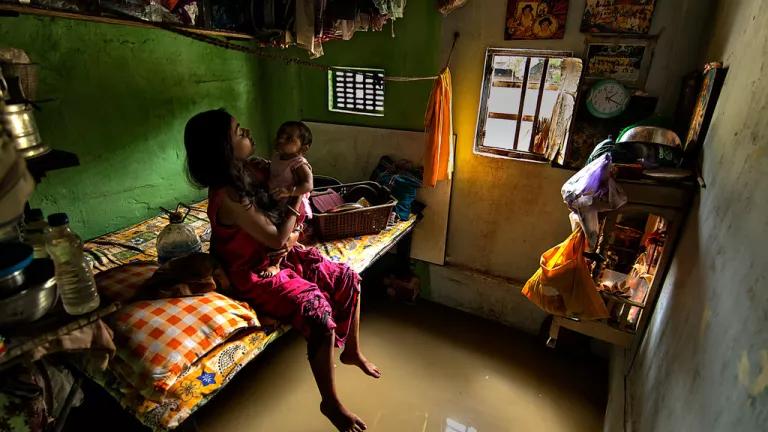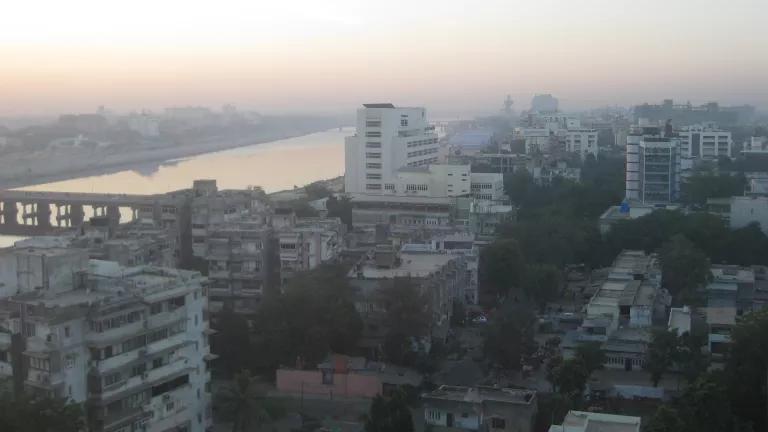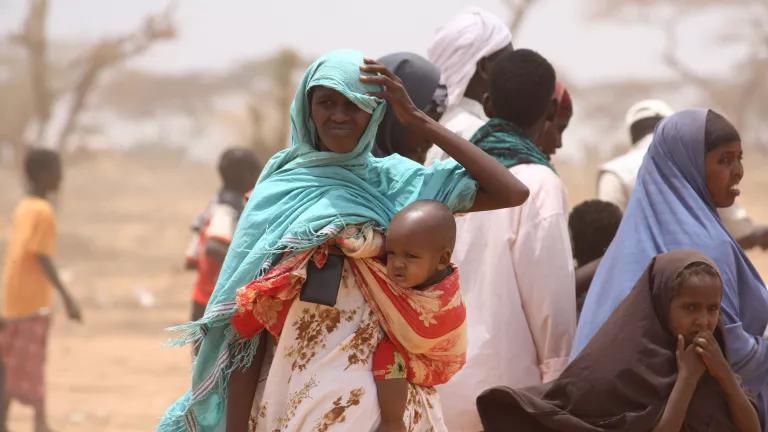Workplace Heat Protections Across the Globe
Solutions that protect workers from heat already exist and several countries have mandatory policies to ensure employers provide workers with heat-relieving measures.

Agricultural workers harvesting crops (2019)
Husain Akbar/BBH Singapore via Unsplash
People are facing an increased risk of heat-related illnesses and injuries while on the job as the climate crisis drives temperatures higher and makes heat waves more severe. As these risks increase, so must protections to keep them safe. Solutions that protect workers from heat already exist and several countries have mandatory policies to ensure employers provide workers with heat-relieving measures.
Extreme heat touches workers in every country
This summer has been a scorcher: From North America to parts of Europe and northern Africa, persistent heat has created dangerous conditions across the globe, leaving many workers at risk of serious heat-related health problems.
Heat stress affects all workers, from outdoor workers in the agriculture and construction sectors to those in hot indoor settings such as manufacturing facilities or workshops. The global number of workers, both inside and out, potentially impacted by heat is staggering: nearly one billion people are employed as agricultural workers, and another 66 million in the textile industry alone. In addition to causing health concerns, heat also reduces labor productivity and drives poverty (e.g. loss of crops due to heat waves), affecting the livelihoods of workers. In certain regions, marginalized and vulnerable workers bear most of these costs, including migrant workers, undocumented people, and those without formal education or who cannot communicate in the local language of where they work.
Evidence-based, mandatory workplace heat stress rules have the potential to protect workers by setting minimum requirements for employers to follow—and penalties for those who fail to comply. While there is no global blueprint for a workplace heat standard, several countries have developed rules to varying degrees that aim to protect their workers from oppressive heat.
Heat protections for workers around the world
Asia
China’s Administrative Measures on Heatstroke Prevention, released in 2012, requires employers to provide protective measures to outdoor and indoor workers. Employers are required to cut down working hours and reduce work intensity during hot days (35°C/95°F outdoors and 33°C/91.4°F indoors). If temperatures reach 40°C/104°F employers must suspend outdoor operations. Additionally, employers are required to conduct training on heat-related illnesses and provide cooling measures such as rest areas, free cool drinks, and air conditioning in indoor workplaces. Workers who suffer from heat stroke and other heat-related complications must be given workers’ compensation. For workplaces that cannot reduce temperatures below 35°C/95°F outdoors and 33°C/91.4°F indoors, employers must pay High-Temperature Subsidies (HTSs) to their workers ranging from the equivalent of $1.24 to $30.90 USD per day. A study in Guangzhou city found that heat-related occupational injuries have declined since implementation of the rule. However, advocates have raised concerns over employee knowledge of the regulation and access to the HTSs.
The WetBulb Globe Temperature (WBGT) is a measure of the heat stress in direct sunlight, which takes into account: temperature, humidity, wind speed, sun angle and cloud cover (solar radiation). The WBGT is used as a guide for managing workload in direct sunlight.
First issued in 1976 and most recently revised in 2016, Thailand’s indoor and outdoor occupational heat standard uses the wet bulb globe temperatures (WBGT) as an index to estimate heat stress in the workplace. Specific WBGT temperature limits are given for the intensity of work done. For example, medium work has a corresponding WBGT value of 32°C/89.6°F (medium work includes lifting, towing, pulling, or removing anything with medium force). Employers are encouraged to use engineering controls (e.g., cooling fans) where feasibly possible to cool down work areas. In lieu of controls, employers must post warning notices and provide personal protective equipment to workers. Employees who succumb to heat must be provided a health checkup and immediate medical treatment for any related “physical abnormalities or illness”. Researchers have found that workplaces in compliance with the standard had the least percent of workers with a risk for heat stress.

Ghanian factory workers producing shirts (2015)
Africa
In Gabon, employers are required to provide rest breaks and appropriate protective measures such as personal protective equipment to workers exposed to extreme heat. Mozambique’s heat regulation requires employers to provide personal protective equipment to workers who are exposed to high temperatures. Additionally, mining activities must be suspended when temperatures exceed 33°C/91.4°F. Enclosed workspaces in Cameroon are required to have adequate ventilation to prevent excessive temperature rises.
In South Africa, if the average WBGT exceeds 30°C/86°F in a one-hour period employers must take steps to reduce the temperature, conduct annual medical monitoring for heat, ensure workers are acclimatized, inform workers the need to regularly drink water, provide heatstroke prevention training, and prompt first-aid in the event of a heat stroke.
Central and South America
Established in 2015, Costa Rica’s Regulation for Prevention and Protection of Workers Exposed to Heat Stress policy aims to protect outdoor workers from heat stress. The regulation was brought about after numerous studies highlighted the prevalence of chronic kidney not traditional disease among farmworkers in Central America. Modeled after the U.S. Occupational Safety and Health Administration’s “Water. Rest. Shade.” campaign, the regulation states that employers must provide workers with protective measures including training, personal protective equipment, time to acclimatize to the heat, rehydrating drinks, and shaded areas for rest. In addition, workers must be enrolled in a health surveillance program focused on kidney health and function.
In Brazil, heat exposure for workers is to be kept within tolerance limits based on the WBGT index, rest periods, and type of activity. Workers must be compensated if the heat exposure exceeds the tolerance limits, on a scale depending on the severity of the heat exposure.
Europe
Germany and Spain have set indoor temperature limits for workplaces. In Spain, sedentary indoor offices must be kept at 27°C/80.6°F (and 25°C/77°F for light work settings). Germany’s Technical Rule for Workplaces: Room Temperature requires that most indoor temperatures should not exceed 26°C/78.8°F. In these work settings, suitable sun protections should be implemented including blinds. If the outdoor temperature exceeds 26°C/78.8°F, additional protection measures must be taken including adequate indoor ventilation, reduction in work hours, provision of drinks, and relaxed clothing regulations. For workplaces where temperatures could exceed 35°C/95°F (e.g., hot ovens) cooling measures such as misters, frequent breaks, and heat protective clothing are required.
Under the Code of Practice for Thermal Stress of Employees, employers in Cyprus must reduce exposure to heat for indoor and outdoor workers. Employers are required to monitor weather forecasts and take appropriate measures to reduce heat stress such as adjusting work intensity. Employers also must document records of weather forecasts and measures taken to reduce heat stress.

Migrant workers at a construction site in Qatar (2011)
Middle East
Across the Middle East, midday work bans on outdoor labor are instituted during the summer months. The restriction periods vary by country, some starting in June or July, and ending in August or September. Restriction hours also vary. For example, Qatar’s work ban starts as early as 10 am, and Kuwait and Bahrain’s end as late as 4 pm. Alongside the work ban, countries have also mandated certain heat safety measures for workers. In the United Arab Emirates, workers are to be provided shade during the work ban, free medical check-ups, training courses, and water and cold juices. In Qatar, employers must conduct regular heat stress assessments and mandate that all work must stop if the WBGT exceeds 32.1°C/88.1°F.
Penalties are given to employers who work during the midday ban. These range from fines up to $2,600 USD (Bahrain) for each laborer working outdoors to a possible jail term (Oman). In Saudi Arabia, businesses that do not adhere to the work ban face closure of up to 30 days. Exemptions are made for oil and gas workers and maintenance workers supporting emergencies. Advocates have found some lapses in the regulations such as a lack of transportation options for workers during the work ban, leading to employees staying onsite in extreme temperatures. In addition, the regulations fail to protect delivery workers, gas station attendants, and security guards, who all continue to work through the midday work ban.
For three summers, Sage Vinson worked in a warehouse with 100° temperatures. He vomited from the heat. On the most sweltering days, the green dye from his beard dripped onto his clothes.
— Abha Bhattarai (@abhabhattarai) July 19, 2021
“I’d walk into the bathroom and see people passed out on the floor." https://t.co/rB4UnZgWCN
North America
The United States has no federal heat standard, but three states (Minnesota, California and Washington) have instituted regulations to protect workers in their state. Several states (Oregon, Maryland, and Virginia) have also started the process of developing permanent heat rules.
Minnesota’s heat standard only protects indoor workers. Employers are required to provide training on heat to their workers and use the WBGT index to determine exposure to indoor environmental heat conditions. Washington’s heat rule applies only to outdoor workers and takes effect annually from May 1 through September 3. When temperatures reach 31.6°C/89°F employers are required to provide drinking water, heat training, and acclimatize workers to the heat. If employees are wearing protective equipment the trigger temperature for the standard is reduced. Washington recently introduced emergency rules, when temperatures reach 37.7°/100°F, employers must provide shade and cool down rest periods.
In California, employers of outdoor workers are required to provide employees with water, access to shade, training on heat, and time to acclimatize to the heat. When temperatures reach 95°F and above, employers are required to implement high-heat procedures including mandatory buddy systems (or constant communication for employees who work along), pre-shift meetings, and rest breaks.
While workers have long faced heat hazards in the workplace, the impacts of climate change have increased these risks over time. Mandatory heat safeguards could be the matter of life and death for many workers across the globe. With many of the dramatic impacts of climate change already locked in and to avoid even worse health harms, it is now time for an “all hands-on deck” approach to promote worker-protective actions.



